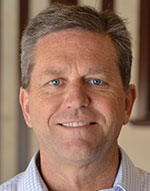Faith, Hope and Charity / David Siler
‘Water is life!’
 Each morning, I step into the shower for that daily ritual that takes me from a state of semi-consciousness to fully alert and ready for a new day.
Each morning, I step into the shower for that daily ritual that takes me from a state of semi-consciousness to fully alert and ready for a new day.
After experiencing a hot shower, I then turn on the bathroom faucet where, almost magically, clean water appears in order for me to brush my teeth.
On my way out the door to work, I fill my one-liter bottle with purified drinking water. And so begins another day with a seemingly endless supply of the one earthly element that makes all the others possible.
My recent trip to Ethiopia and Tanzania in Africa had one theme that could have easily been emblazoned in neon lights—“Water is life!”
Before my trip, I had heard about the scarcity of water in Africa, but to witness firsthand the daily struggle to find and transport it brought me an entirely new appreciation for what many in Africa call “liquid gold.”
I traveled in September to the “dark continent” with 12 other diocesan representatives from all over the United States, and with two staff members of Catholic Relief Services—our Church’s relief organization to countries outside of our borders.
Our purpose was simply to visit some of the programs operated by CRS to learn about what we do and how it is done in order to be able to share this important work with Catholics at home. The trip was called a “mission of solidarity”—that is, to get to know these distant members of our human family.
Many of the projects that CRS operates in these two countries are projects that, through a variety of methods, bring water to the people rather than the more common means of people traveling to the water.
In one very remote village, I gained a whole new appreciation for the phrase “the middle of nowhere.” In the Diocese of Same (pronounced Sa-may), the chief of this Masai tribe explained to us—in his native Swahili language through a translator, and with tears running down his face—that the women of his village leave in the early morning each day of the year to gather water from a distant stream, and they don’t return until late in the afternoon.
So for eight to 10 hours every day, all of the women of the village are away from home—gathering and hauling water that will be used for cooking, drinking, washing, and watering their goats and other animals.
The local CRS staff told us that this village was about six months away from having water brought to within a 10-minute walk.
Prior to our visit there, we traveled to several other locations where CRS projects had already made water readily available. In these villages, women explained to us how their lives have been enhanced by having several hours more each day to educate their children, and care for their crops and animals. Many of them have begun small businesses that could bring income for their families.
In addition to the practical benefits of the availability of clean water, the impact on the people’s health has been profound. It had never really occurred to me the many health hazards that are caused by contaminated water—which is most of the water that is hauled from streams, rivers and ponds.
As I stood at one well-head with village children gathered around, I saw the image of Jesus, who said to us, “If anyone is thirsty, come to me and drink” (Jn 7:37).
(David Siler is executive director of the Secretariat for Catholic Charities and Family Ministries. E-mail him at dsiler@archindy.org.) †
 Each morning, I step into the shower for that daily ritual that takes me from a state of semi-consciousness to fully alert and ready for a new day.
Each morning, I step into the shower for that daily ritual that takes me from a state of semi-consciousness to fully alert and ready for a new day.